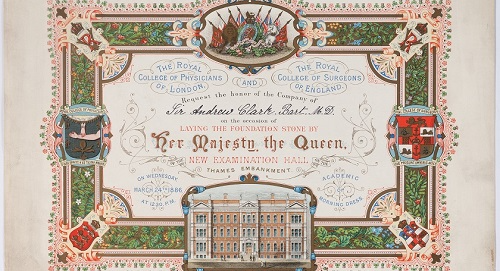approaching-open-access-one-size-does-not-fit-all
December 06, 2019
“Each deal is very different, but the key features of reaching an agreement of any kind are to be open, to share and compare data, to have trust and to be really honest about what we want.”
way? What kind of flexibility is needed to support the range of objectives across academic institutions and how do we tailor our collective approach in a way that meets all ends of the spectrum?
In Key Considerations to Open Access, we brought together two community leaders whose innovative initiatives have made headlines in recent months, notably OhioLINK’s Wiley Open Access Account Pilot and Projekt Deal in Germany.
“Everyone wants the same thing, but the risks, rewards and timelines are seen very differently between different groups of people.”
For Executive Director of OhioLINK Gwen Evans, experimentation with OA pilot initiatives is necessary to “test some hypotheses about ‘read’ versus ‘publish’ institutions and their behavior.” In recent months, Executive Director of OhioLink Gwen Evans has publicly discussed the issue of transformative OA deals and the complexity they pose to consortia like OhioLink, whose diverse member composition only consists of a total of 26 “publish” institutions—not even a third of its institutional member base. For Evans, this imbalance raises questions of workload, sustainability, and the potential that these deals could involve higher costs or unclear benefits for the bottom line.
In support of OhioLINK members’ desire for engagement in the OA movement, Evans described OhioLINK’s recent partnership with Wiley to establish a Wiley Open Access Account that will enable OhioLINK-affiliated researchers to use a central fund for Article Publication Charges (APC).
“We really want to capture the workload – what it would take centrally and whether OA is sustainable, and we really want to measure the willingness of individual institutions to contribute to an OhioLINK consortial OA initiative,” Evans explained. “One of these goals has already been achieved; 0% of individual institutions committed their own money. Reasons vary, but by far the most common is the lack of extra money.”
Another notable issue that has come up during the course of the implementation process is that when there’s a total flip from subscription to OA under the APC model, all the costs are shifted to “publish” institutions or their funders, even if the total costs remain the same. In other words, “77 institutions would eventually pay nothing, and 13 would be responsible for 97% of the costs.”
As a result, an inherent conflict persists: how to support the consortium’s members with OA efforts without causing deleterious consequences to the consortia as a whole? For Evans, managing expectations among membership is key, but realistic discussions about how to move forward seem to “paint a giant anti-OA target” on the consortium’s back.
“The collective question,” Evans concluded, “is what the future of OA will look like and how ‘read’ institutions and consortia will participate in OA funding initiatives.”
“We are in the midst of a transition, and nobody has the right answers yet. We are testing different models that might fit the specific context of any given institution or country.”
Earlier this year, Wiley’s countrywide partnership agreement with Projekt Deal, a representative of nearly 700 academic institutions in Germany, made headlines across the globe for its achievement of reaching a transformative deal that delivered on all fronts: collaboration, fair pricing, sustainability, and greater research accessibility for all.
Offering her perspective as a critical member of Projekt DEAL, Colleen Campbell, Communications Manager at the Max Planck Digital Library, shared her thoughts on transformative agreements and the future of these partnerships to come.
Campbell began by offering insight into the OA baseline and where we are coming from with the transformative agreements happening both in Europe and the US.
“The OA2020 initiative began to promote the strategy to address the subscription system head-on while we continue to invest in pure OA journals, new OA platforms, and academy-led publishing venues.”
One of the key strategies to achieve this initiative is the transformative agreement. “The baseline is that there is a shift in the money. The money is not going to pay for access anymore; instead, it is going to pay for publishing, whether that shift is immediate of gradual over the agreement term.”
And, despite multiple models for testing, there are basic guidelines that all transformative models are trying to work within: the recognition that this kind of agreement is a transitional and temporary thing, the need for authors to retain the rights over their works and the acceptance that this is a whole new world that will need new workflows and processes.
“Transformative agreements are happening around the world, and multiple publishers are truly joining the ranks and are willing to partner and talk about them. Things are happening.”
Campbell’s presentation also focused on the details of the current transformative deal between Projekt DEAL and Wiley, sharing some of the factors that contributed to its success.
“This is considered a huge success,” she mentioned, “because both sides really viewed this as a partnership. For example, the money that Wiley is paid for their services is based on the actual article output, so there is risk sharing on both sides.”
Campbell also addressed the inherent benefits for researchers. For German authors, “this is wonderful,” she explains, as they now get unlimited open access publishing entitlements, their accepted manuscripts can be published open access and they don’t pay from their own pockets.
This transformative deal has also expanded access already because read access to the entire Wiley journal portfolio is included in the read-to-publish fee for the entire country, even if institutions didn’t subscribe before. “This was the first national agreement of its kind in Germany, so for German research at large, this deal is a huge win.”
“And finally,” Campbell concluded, “the best benefit of all is the fact that the rest of the world can now use and reuse these articles published by German authors, which brings us that much closer to an open academic world.”
“So where do publishers stand on all this?”
“This pace of change is definitely going to continue,” says David Fisher, Wiley’s Vice President of Global Library Sales and a key figure in driving these transformative agreements.
“There is a real, urgent need to share and compare data, and it feels now in North America that the library wants to be pivotal in enabling a real shift to open access,” Fisher remarked. “In the wake of this shift, publishers are investing in authors, to identify and comply with mandates, to make submission easy, to speed up the submission process and to speed up the publishing process.”
This focus on authors is a critical part of the open access equation, as we look to see how their behavior changes in response to the changing climate and “whether there is a switch to submitting to gold OA journals now that funding is available to do so.”
Ultimately, Fisher reinforced the point that right now, it’s still very experimental and that as we continue to pilot transitional deals, it’s imperative that we experience, observe and analyze behavior to learn for the future.
To see the entire presentation, download the slides from the session now.
Want to learn more about open access? Check out Open Access in Action: The Last 12 Months Reviewed.










